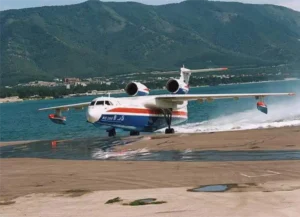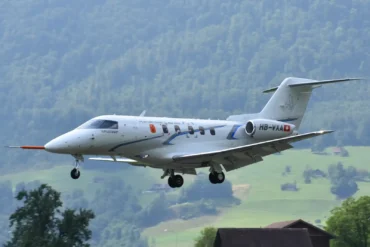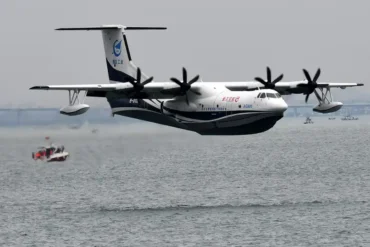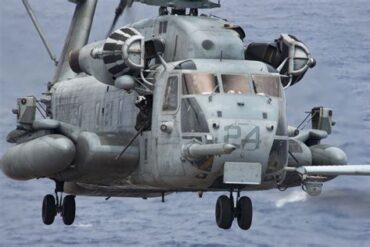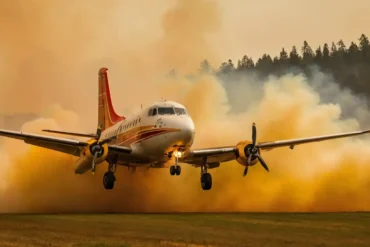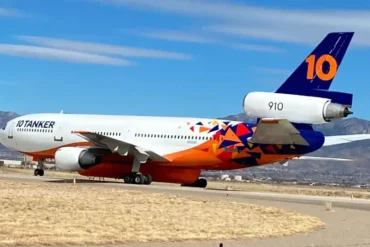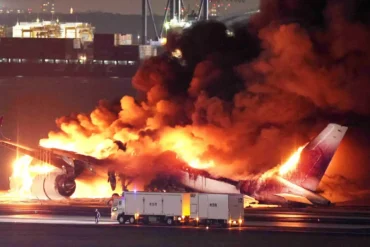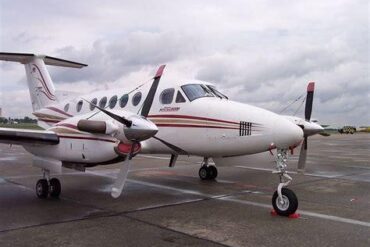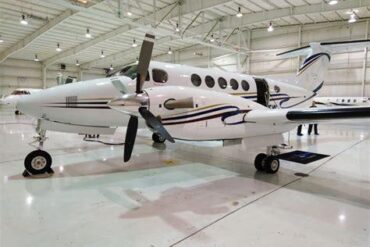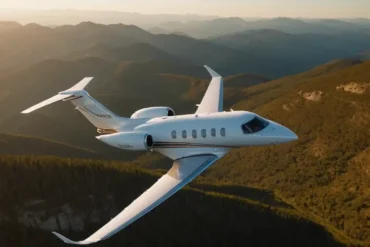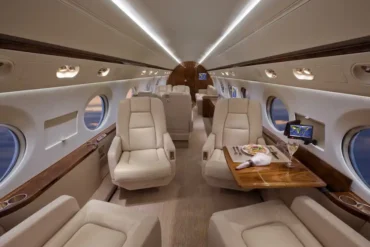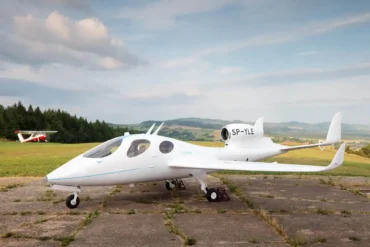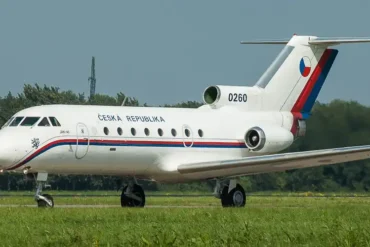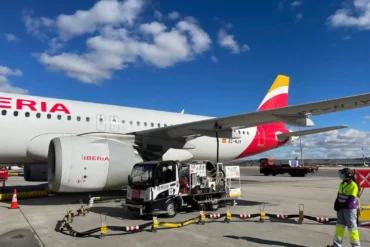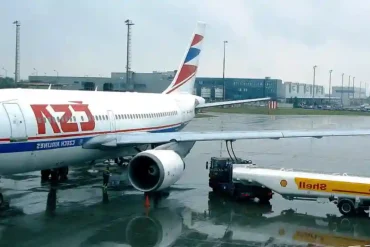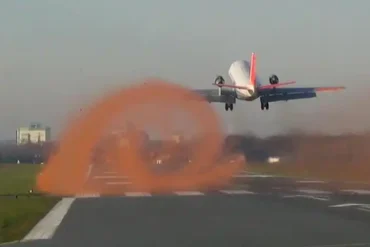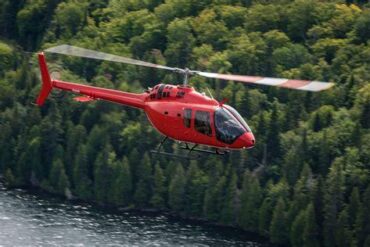The Beriev Be-200 is a pretty cool aircraft. It’s an amphibious plane, which means it can take off and land on both water and land. The Russian company Beriev Aviation came up with the idea, and another Russian company called Irkutsk Aircraft Production Association helped build it. The plane first took to the skies in 1998 and made its big debut in the West at the Paris Air Show in 1999.
In May 2002, IAPO (now part of Irkut Corporation) and EADS decided to team up. They wanted to look into potential markets, figure out how to get the plane certified internationally, and plan how to provide support services around the world.
After finishing their study in 2003, Rolls-Royce Deutschland joined the party. Together, they aimed to get the plane certified in the West and introduce it to new markets. They planned to use Rolls-Royce BR715 engines to power the aircraft.
The Beriev Be-200 was originally designed to fight fires. It can scoop up water while skimming across a lake or ocean, then take off and drop that water on a fire. It can carry a whopping 12 tons of water!
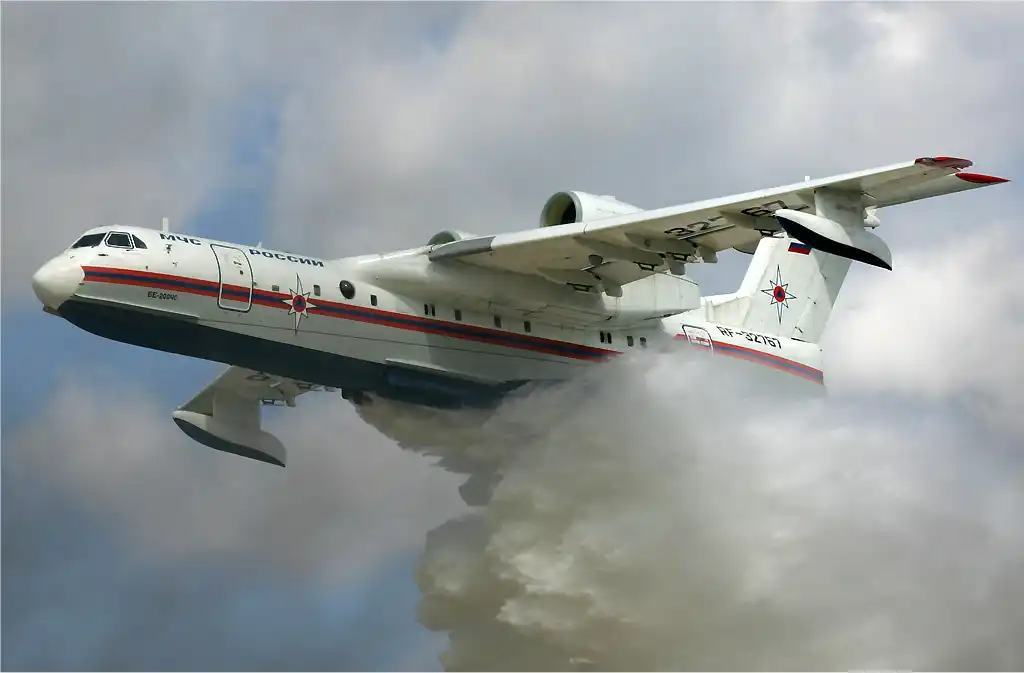
The first Be-200 flew for 650 hours to prove it was safe and effective at fighting fires. Russia’s Ministry of Emergency Situations liked what they saw and ordered seven planes. They started getting their new firefighting aircraft in June 2003 and had them all by 2008.
During a particularly hot summer in Greece in 2007, two Be-200s helped battle forest fires. The Greeks were so impressed that they decided to buy some for themselves. Meanwhile, the Russian Navy plans to get four Be-200s for search and rescue missions. They’re even thinking about a military version that could hunt submarines!
In August 2004, Irkut let Italy’s Civil Protection Department borrow a Be-200 to fight fires. The Italians started using it in July 2005 on the island of Sardinia.
Portugal’s Ministry of Internal Administration also wanted to try out the Be-200. In June 2006, they signed a deal with Irkut to borrow one for firefighting starting in July of that year.
The Be-200 is like a Swiss Army knife of planes. It can be a cargo plane, a passenger plane (called the Be-210), or a firefighting plane. It can even be turned into a flying ambulance that can carry 30 patients on stretchers and seven seated patients or medical staff.
For search and rescue missions, the plane gets kitted out with bright lights, special sensors, and medical equipment. Some countries might even want to use it to hunt submarines, and the plane can be customized to do that too.
When it’s in firefighting mode, the Be-200 has big water tanks made of strong metal under the floor. It has four scoops that pop out to collect water, and the tanks can be taken out if you need to carry cargo instead. The plane can also mix fire-retardant chemicals into the water using a special pump.
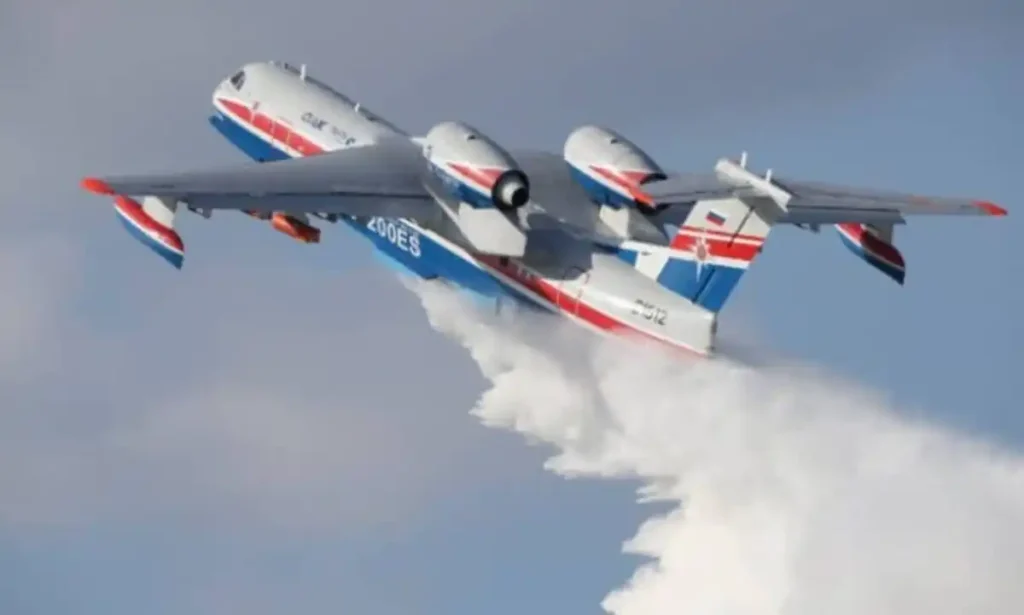
Here’s a cool fact: A fully fueled Be-200 can fly 200km from its base to a lake or ocean, then go back and forth between the fire and the water, dropping a total of 310,000kg of water before it needs to refuel. That’s a lot of water!
The Be-200 can scoop up 12 tons of water in just 14 seconds, even if there are waves up to 1.2 meters high. It flies over the fire at more than 220km/h and can drop all that water in less than a second.
The plane’s body is designed like a boat, which helps it stay stable on water when taking off and landing. It’s made of strong, lightweight metals and has little floats under the wings to keep it steady.
In the cockpit, there’s room for two pilots. They have six big screens that show them all the information they need to fly the plane safely. It’s like a high-tech computer system for flying!
The inside of the plane can be set up in different ways. It can carry up to 66 passengers in regular seats, or fewer passengers in fancier seats. If you want to use it for cargo, it can carry up to 7,500kg of stuff. You can even mix passengers and cargo, fitting 19 people and 3,000kg of goods. The cargo door is big enough to load bulky items easily.
The Be-200 is powered by two big engines made by a company called Progress. Each engine can produce 73.6kN of thrust, which is a lot of power! The plane can carry up to 12,260kg of fuel, and it has a special system to keep ice from building up on the engines.
Finally, the plane has wheels that can be pulled up into the body when it’s flying or landing on water. When it’s on water, it has special rudders to help it steer, just like a boat!
Technical Details of Beriev Be-200
| Parameter | Value |
|---|---|
| Length | 31.43m |
| Height | 8.9m |
| Wingspan | 32.78m |
| Tailplane Span | 10.11m |
| Fuselage Length | 29.18m |
| Fuselage Diameter | 2.86m |
| Floor Area Excluding Flight Deck | 39m² |
| Passenger Cabin Length | 17m |
| Passenger Cabin Width | 2.4m |
| Passenger Cabin Height | 1.8m |
| Cargo Cabin Length | 17m |
| Cargo Cabin Width | 2.6m |
| Cargo Cabin Height | 1.9m |
| Maximum Take-off Weight | 37,200kg |
| Maximum Landing Weight | 35,000kg |
| Maximum Airborne Weight after Water Scoop | 43,000kg |
| Payload | 7,500kg |
| Fuel | 12,260kg |
| Maximum Level Speed at Altitude 7,000m | 720km/h |
| Never Exceed Speed, VNE | 610km/h |
| Service Ceiling | 8,000m |
| Service Ceiling, One Engine Inoperable | 5,500m |
| Runway | 1,800m |
| Take-off from Runway | 700m |
| Landing from 15m on Runway | 950m |
| Take-off on Water | 1,000m |
| Landing from 15m on Water | 1,300m |
| Water Scooping Distance to 15m | 1,450m |
| Take-off Operational Noise Level | 96EPNdB |
| Climbing Operational Noise Level | 90EPNdB |
| Landing Operational Noise Level | 98EPNdB |
